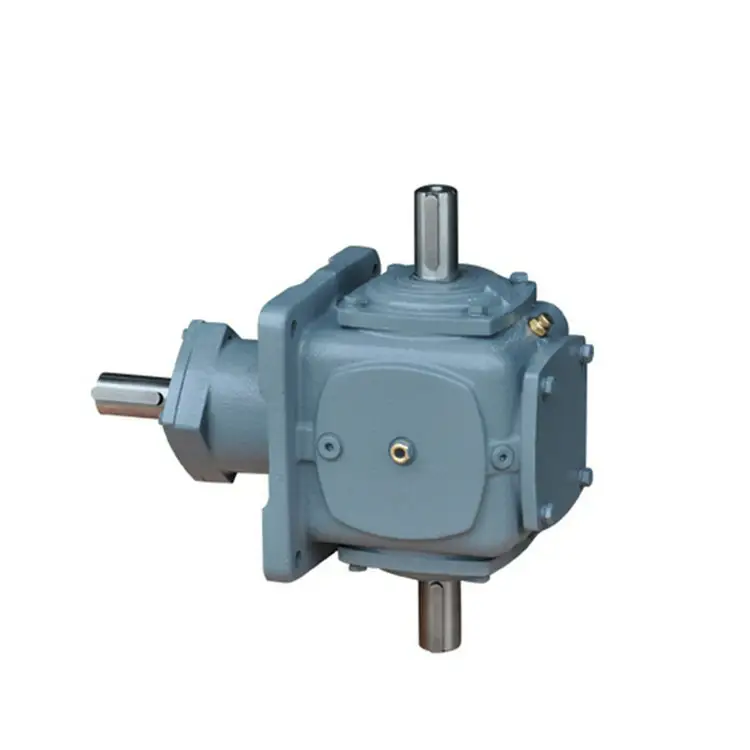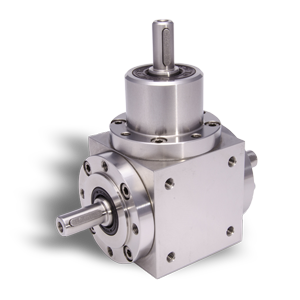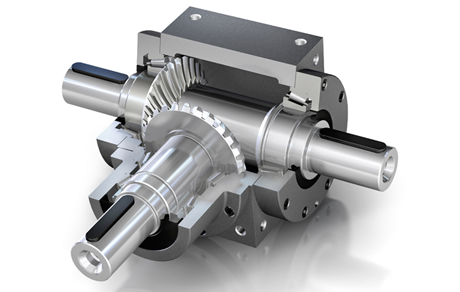Product Description
| Product Features | Description |
| Product Models | T2, T4, T6, T7, T8, T10, T12, T16, T20, T25, Z2, Z4, Z6, Z7, Z8, Z10, Z12, Z16, Z20, Z25, JRTM2, JRTM4, JRTM6, JRTM7, JRTM8, JRTM10, JRTM12, JRTM16, JRTM20, JRTM25 |
| Maintenance | Clean internally and replace lubricant after initial use of 2 weeks or 100-200 hours. For long-term use, replace lubricant every half to 1 year or every 1000-2000 hours |
| Lubricant | China Petroleum’s all-effect gear oil of 90-120 degrees. Under low speed and light load conditions, it is recommended to use all-effect gear oil of 90 degrees. Under heavy load and high temperature conditions, it is recommended to use all-effect gear oil of 120 degrees |
| Product Description | The T series spiral bevel gear steering gearbox is widely used in food, pharmaceutical, chemical, steel, metallurgy, textile, plastic, paper and other machinery equipment, assembly lines and other industries |
| Technical Features | The gearbox has a high rigidity FC-25 cast iron casing. The gears are made of high-quality high-purity alloy steel 20CrMnTi carburized and quenched, and ground. The shaft is tempered alloy steel with high load-bearing capacity. It is equipped with a heavy load-bearing tapered roller bearing. The oil seal has a double lip seal, which has dustproof and oil leakage prevention capabilities |
| Performance Features | The T series spiral bevel gear steering gearbox is standardized and has many varieties. The speed ratio is all actual transmission ratios, with an average efficiency of 98%. It can run CZPT and reverse, with smooth low-speed or high-speed transmission, low noise, small vibration, and large bearing force |
| Technical Parameters | Speed ratio range: 1/1, 1.5/1, 2/1, 2.5/1, 3/1, 4/1, 5/1. Torque range: 11.2 – 5713 Nm. Power range: 0.014 – 335 kW |
·Product Models: T2, T4, T6, T7, T8, T10, T12, T16, T20, T25, Z2, Z4, Z6, Z7, Z8, Z10, Z12, Z16, Z20, Z25, JRTM2, JRTM4, JRTM6, JRTM7, JRTM8, JRTM10, JRTM12, JRTM16, JRTM20, JRTM25.
·Maintenance: The gearbox should be cleaned internally and the lubricant should be replaced after the initial use of 2 weeks or 100-200 hours. For long-term use, the lubricant should be replaced every half to 1 year or every 1000-2000 hours.
·Lubricant: The product uses China Petroleum’s all-effect gear oil of 90-120 degrees. Under low speed and light load conditions, it is recommended to use all-effect gear oil of 90 degrees. Under heavy load and high temperature conditions, it is recommended to use all-effect gear oil of 120 degrees.
·Product Description: The T series spiral bevel gear steering gearbox is widely used in food, pharmaceutical, chemical, steel, metallurgy, textile, plastic, paper and other machinery equipment, assembly lines and other industries.
·Technical Features: The gearbox has a high rigidity FC-25 cast iron casing. The gears are made of high-quality high-purity alloy steel 20CrMnTi carburized and quenched, and ground. The shaft is tempered alloy steel with high load-bearing capacity. It is equipped with a heavy load-bearing tapered roller bearing. The oil seal has a double lip seal, which has dustproof and oil leakage prevention capabilities.
·Performance Features: The T series spiral bevel gear steering gearbox is standardized and has many varieties. The speed ratio is all actual transmission ratios, with an average efficiency of 98%. It can run CZPT and reverse, with smooth low-speed or high-speed transmission, low noise, small vibration, and large bearing force.
| Application: | Motor, Electric Cars, Motorcycle, Machinery, Marine, Toy, Agricultural Machinery, Car |
|---|---|
| Function: | Distribution Power, Clutch, Change Drive Torque, Change Drive Direction, Speed Changing, Speed Reduction, Speed Increase |
| Layout: | Coaxial |
| Hardness: | Hardened Tooth Surface |
| Installation: | Horizontal Type |
| Step: | Three-Step |
| Samples: |
US$ 100/Piece
1 Piece(Min.Order) | |
|---|

Lubrication Requirements for Maintaining Spiral Bevel Gearboxes
Lubrication is crucial for ensuring the smooth operation and longevity of spiral bevel gearboxes. Proper lubrication helps reduce friction, prevent wear, dissipate heat, and protect gear components from corrosion. Consider the following lubrication requirements:
- Lubricant Selection: Choose a high-quality lubricant specifically formulated for gear applications. The lubricant should have the appropriate viscosity and additives to withstand the operating conditions and load demands of the gearbox.
- Lubrication Interval: Establish a regular lubrication schedule based on the manufacturer’s recommendations and the application’s operating conditions. Regular lubrication prevents inadequate lubrication and excessive wear.
- Lubrication Method: Depending on the design of the gearbox, lubrication can be achieved through splash lubrication, oil bath lubrication, or forced lubrication systems. Ensure that lubricant is evenly distributed across gear surfaces.
- Quantity: Use the correct amount of lubricant to ensure proper coverage and prevent overfilling, which can lead to excessive heat generation and foaming.
- Temperature: Monitor the operating temperature of the gearbox. Lubricants can degrade at high temperatures, leading to reduced effectiveness. Ensure that the gearbox operates within the recommended temperature range.
- Contamination Control: Keep the lubricant free from contaminants, such as dirt, debris, and water. Regularly check the gearbox’s breathers, filters, and seals to prevent contaminants from entering the system.
- Oil Analysis: Perform regular oil analysis to monitor the condition of the lubricant and identify signs of wear or contamination. Oil analysis helps identify potential issues early and allows for timely corrective actions.
- Re-lubrication After Maintenance: Whenever maintenance is performed on the gearbox, ensure that proper lubrication is applied before restarting the equipment. This prevents dry starts and ensures immediate lubrication to critical components.
Adhering to proper lubrication requirements and practices is essential for maximizing the performance, efficiency, and lifespan of spiral bevel gearboxes in industrial applications.

Materials for Manufacturing Spiral Bevel Gearboxes
Spiral bevel gearboxes are typically constructed using a variety of materials to ensure durability, strength, and reliable performance. Commonly used materials include:
- Steel Alloys: High-quality steel alloys, such as alloy steels or carburizing steels, are commonly used due to their excellent combination of strength, wear resistance, and toughness.
- Bronze Alloys: Bronze alloys, often used for gear teeth and bushings, offer good friction properties and self-lubricating characteristics.
- Cast Iron: Cast iron can be used for the housing or casing of spiral bevel gearboxes due to its excellent damping properties and resistance to wear and corrosion.
- Aluminum Alloys: In some cases, lightweight aluminum alloys are used to construct certain components of the gearbox to reduce overall weight.
- Stainless Steel: Stainless steel may be employed for components exposed to corrosive environments or for applications requiring high levels of cleanliness.
- Heat-Treated Steels: Heat treatment processes like case hardening, quenching, and tempering can enhance the hardness and strength of gear components.
The choice of material depends on factors such as the intended application, load conditions, operating environment, and the specific performance requirements of the gearbox.

Principles of Spiral Bevel Gear Meshing
Spiral bevel gears operate based on the principles of involute gearing and the meshing of angled teeth. Here’s how the gear meshing process works:
- Involute Profile: Like other gear types, spiral bevel gears have involute profiles on their gear teeth. This profile ensures smooth and gradual tooth engagement during meshing, reducing impact and wear.
- Curved Tooth Surface: The gear teeth on spiral bevel gears are curved along the face width, allowing for gradual and continuous contact as the gears rotate. This design minimizes abrupt changes in contact and reduces noise and vibration.
- Intersecting Axes: Spiral bevel gears have axes that intersect at a right angle. This arrangement allows power transmission between two perpendicular shafts, making them suitable for applications requiring changes in direction.
- Angular Tooth Orientation: The main feature of spiral bevel gears is their angled tooth orientation. Each gear tooth has both radial and axial angles, which contribute to smoother tooth engagement and reduced sliding friction.
- Curved Tooth Alignment: As the gears rotate, the curved surfaces of the teeth align in a way that enables gradual meshing. This results in a rolling contact motion, unlike the sliding contact motion found in straight bevel gears.
- Constant Contact Ratio: The unique geometry of spiral bevel gears maintains a constant contact ratio throughout the gear meshing cycle. This consistent contact ratio ensures smooth operation and even distribution of load.
Overall, the principles of spiral bevel gear meshing lead to quieter operation, improved efficiency, and greater load-carrying capacity compared to other types of bevel gears.


editor by CX 2023-09-11